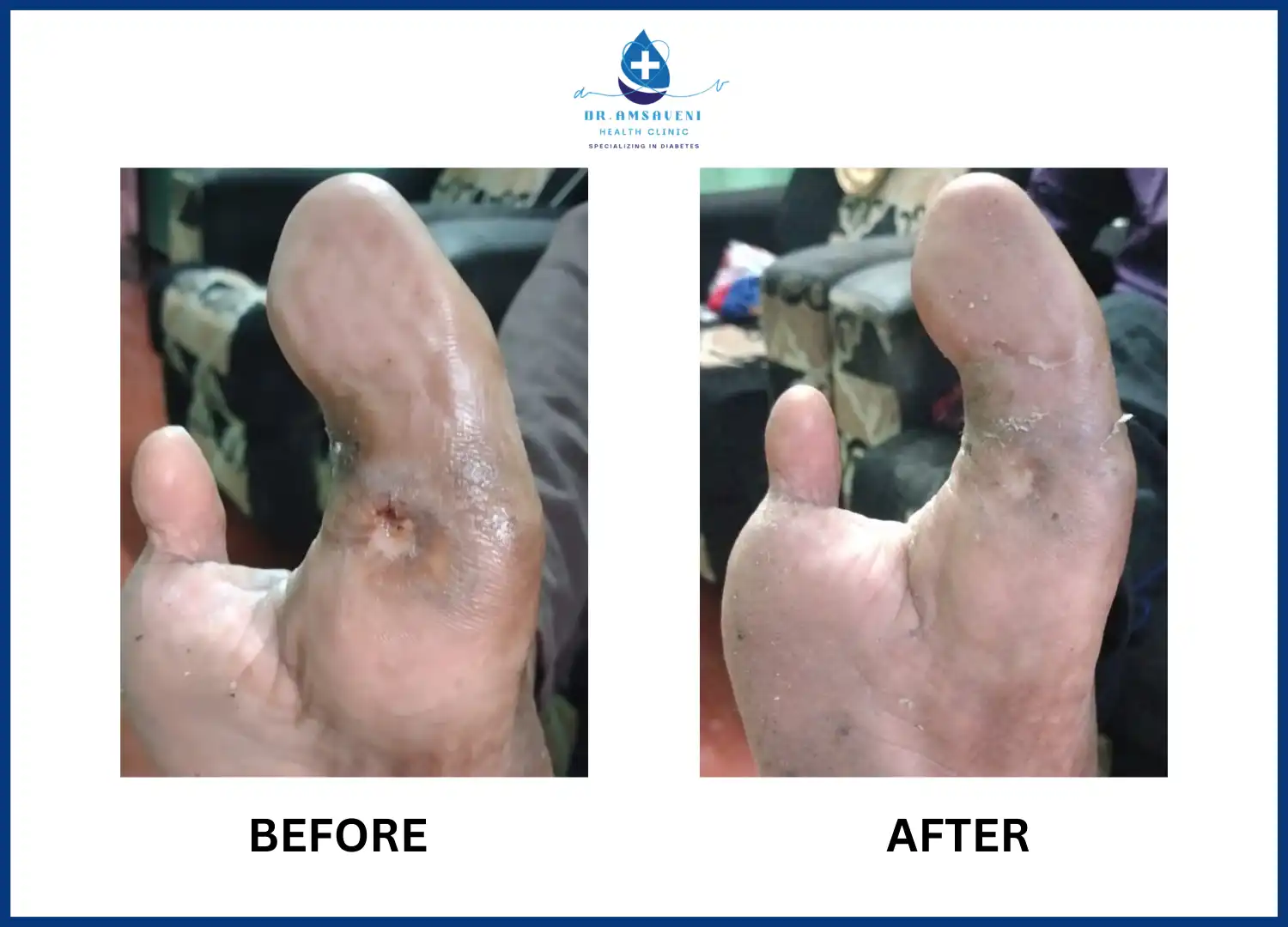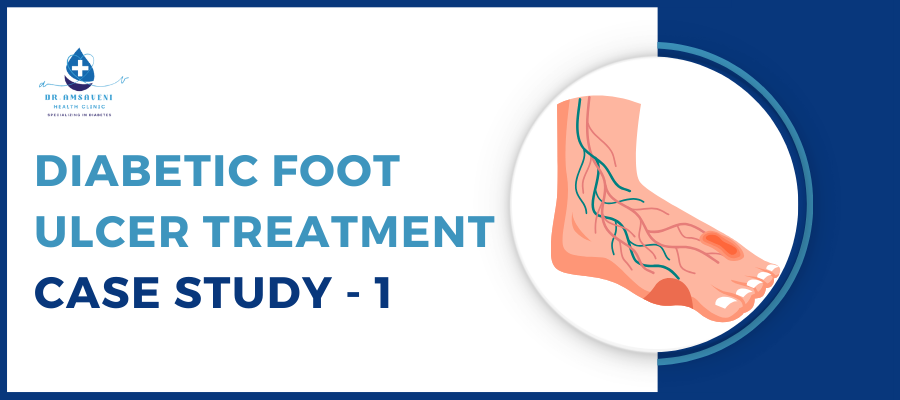Diabetic Foot Ulcer Treatment: A Case Study by Dr. Amsaveni
Good diabetes management and a regular foot care routine are crucial in managing diabetic foot ulcers. This story highlights a 47-year-old male treated by Dr. Amsaveni, who presented with a severe diabetic foot ulcer on his amputated lower limb, showcasing the severe consequences of unmanaged diabetes. The primary diabetic foot ulcer causes were negligence of hyperkeratosis (calluses and coin warts) under his big toe, developed due to peripheral neuropathy in diabetes.The patient, diagnosed with diabetes in 2012, initially ignored the disease due to its silent nature. Over the years, he experienced minor diabetic foot ulcer symptoms like giddiness and drowsiness, but never maintained proper treatment. By April 2022, he noticed his left foot was swollen and soon turned bluish-black. At a nearby hospital, he did not receive appropriate treatment and was referred to a higher center, where a severe diabetic foot ulcer led to the immediate removal of his third and fourth toes.
His postoperative wound initially healed within two months, with blood sugar levels under control by August 2022. However, during a follow-up, his second toe was found infected and was removed. Despite regular wound care, by March 2023, the ulcer persisted with frequent pus discharge. Frustrated with the lack of healing, the patient stopped visiting clinics by June 2023, opting for self-medication. The primary diabetic foot ulcer causes were negligence of hyperkeratosis (calluses and coin warts) under his big toe, developed due to peripheral neuropathy in diabetes.
Diabetic Foot Ulcer Treatment by Dr. Amsaveni
By October 2024, the patient sought help from Dr. Amsaveni. He presented with an open, infected wound, uncontrolled sugar levels, and hypertension. Dr. Amsaveni provided comprehensive care, including daily insulin titration, regular wound care, and antihypertensive medication. Each visit included a mandatory 30-minute wound care session. Within four sessions, the patient’s wound started closing, swelling reduced, and no more discharge was observed. His general health improved significantly. This successful diabetic foot ulcer treatment exemplifies the importance of proper medical care and regular monitoring.

Neglecting hyperkeratosis (calluses and coin warts) under the toes is a common diabetic foot ulcer cause, developed due to peripheral neuropathy in diabetes. This emphasizes the need for daily foot monitoring for people with diabetes. Early detection of thick skin or calluses can signal insulin resistance and prevent severe complications. Proper footwear is essential to avoid injuries for those with peripheral neuropathy.Foot ulcers progress through several diabetic foot ulcer stages, from initial diabetic foot ulcer symptoms to severe complications. Early detection and treatment at each stage are crucial to prevent worsening. Various treatment options, including diabetic foot ulcer treatment in Ayurvedha, are available. It’s essential to ensure that any chosen treatment is suitable for the specific wound and is consistently followed for effective healing.
Understanding and addressing diabetic foot ulcer stages early on can make a significant difference in the patient’s recovery journey. By focusing on each stage, the treatment can be more effective, ensuring a better outcome.





